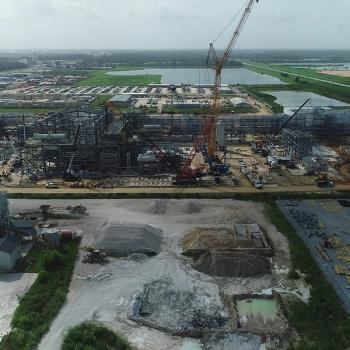
Gas turbines at among the coldest oil fields
Dresser-Rand's KG2 gas turbine[/caption]
Dresser-Rand KG2 turbines provide on-site electrical power for one of Russia’s largest oil producers.
The climate is often severe, with long, cold winters and short, cool summers. Average temperatures in January hover just above zero degrees Fahrenheit (-18 degrees Celsius).
One of the northernmost republics of European Russia, Komi is located approximately 650 miles (1,046 km) north of Moscow and less than 400 miles (644 km) south of the Arctic Circle. It’s among the largest oil and gas producing regions in European Russia and one of the country’s top 10 producers.
One of the area’s oldest fields, Lekkerskoje (Lekker), is situated near the city of Usinks, founded in 1966 as an oil and gas production center settlement. Since the Lekker deposit is in a remote location, there are no external electric power networks. Because of this, it’s critical to maintain an uninterrupted power supply.
Initially, diesel power stations were used to provide power to the local infrastructure. Russia’s second largest oil producer, Lukoil-Komi (a branch of Lukoil), decided to upgrade its power generation facilities at Lekker. After careful consideration of the proposals, company managers opted to purchase and install four 1.8 MW Dresser-Rand KG2 turbine generator sets and auxiliary equipment. Zvezda-Energetika, a key player in the Russian power generation industry, was selected as the local packager for the four skid-mounted KG2 turbine generator sets.
One of Lukoil-Komi’s key variables in choosing the KG2 is that it can accept a wide variety of fuels, ranging from pipeline quality natural gas to low heating value gas. According to Russian Federation law, flaring of gas is subject to heavy fines. The Dresser-Rand power station solved this problem by producing electricity on-site from available resources, which prevented flaring. These types of power stations are specifically engineered for fuel flexibility and sustainability, so that the gas can be used as an energy resource instead of being wasted through venting or flaring. It’s not only efficient, but better for the environment, too.
Newsletter
Power your knowledge with the latest in turbine technology, engineering advances, and energy solutions—subscribe to Turbomachinery International today.




